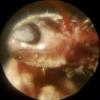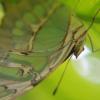- Formiculture.com
- Forums
- Gallery
- Members
- Member Map
- Chat

Six Ants to ID, Pacific Northwest, USA
Started By
Joshooa
, Jun 18 2017 12:14 AM
5 replies to this topic
#1
 Offline
-
Posted June 18 2017 - 12:14 AM
Offline
-
Posted June 18 2017 - 12:14 AM
1. Location of collection: Arlington, WA.
2. Date of collection: Most June 15th, 2017 one June 17th, 2017
3. Habitat of collection: Gravel parking lot with 24 hour lights, under large rocks in dirt. Last one on pavement.
4. Length (from head to gaster): Queen A: 15mm, Queen B: 14mm, Queen C: 13mm, Queen D: 14mm, Queen E: 9mm, Queen F: 6mm
5. Color, hue, pattern and texture: Varies, see pictures.
6. Nest description: Unknown
Hey everyone! I am really hoping I can get some help with the ants I've found so far. This is my first year trying to capture a queen and the other day I found five, all in the same parking lot. I believe four are camponotus and probably all same species but I have no idea. The other one is Formica and found in the same parking lot under a big rock, just like the other four. Then this afternoon after a failed morning hunt while watching bugs outside I saw a little dot moving on the pavement. It's super tiny and I have no idea what it could be. It sure is a lot of fun trying to take pictures of with my cell phone. I have a bunch of images, all at joshooa.imgur.com. Here's some more information for them....
Queens A-E were all found between 8:30 and 9:30 in the morning. It was sprinkling throughout the night and was very lightly sprinking when I found them. Probably upper 40s F but I'm not sure. They were all under rocks with no wings. They've been in test tubes mostly left alone in the dark since the first day and B, C and D all have eggs now. The last queen I got was around 1:30 in the afternoon, around 70F with the sun out at the time but high humidity. It rained a little before and later in the day. Queen A isn't liking the test tube life and pulls at the dry cotton but I noticed some dirt in there and I think I should make her a new more sanitary home. See if that helps. Queen E is semi agressive towards the dry cotton but leaves it alone just as much. Queen F has been calm the entire time I've had her in a tube. Was only fast when I picked her up in my hands of the pavement.
That's about all I can think of that I know about them, if there's any more information or pictures needed please let me know. I'm pretty sure that they aren't all fully claustral and I need to figure out what kind of ants I need to research pronto! Again, the pictures are at https://joshooa.imgur.com/with each Queen in her own folder, assuming I did it right. Thanks everyone for looking and trying to help!
#2
 Offline
-
Posted June 18 2017 - 12:39 AM
Offline
-
Posted June 18 2017 - 12:39 AM
I'm dumb, diddnt see the link .. - disregard
Edited by antking117, June 18 2017 - 12:47 AM.
#3
 Offline
-
Posted June 18 2017 - 12:46 AM
Offline
-
Posted June 18 2017 - 12:46 AM
Nice Finds! Queen A is Camponotus pennyslavicus queen B is either C.vicnus. Queen C looks like C.vicnus but its hard to be sure because the red color does not reach towards the start of the gaster where the petiole ends. Queen D looks like C.vicnus. Queen D has quite the petiole! Queen looks like Formica rufibarbis or F.cunicularia. The last one seems to be T.curbispins or something like that forgot the exact name.lol. But take my IDs as a grain of salt, I am constantly getting them wrong.
All my colonies are dead.
Except:
Pogonomyrmex barbatus
Pheidole obscurithorax
Pheidole morens
#4
 Offline
-
Posted June 18 2017 - 1:15 AM
Offline
-
Posted June 18 2017 - 1:15 AM
I'm not sure that A is pennsylvanicus, with the red legs.
#5
 Offline
-
Posted June 18 2017 - 4:18 AM
Offline
-
Posted June 18 2017 - 4:18 AM
I would go with Camponotus modoc for queen A, although I'm unfamiliar with the Northwest ant fauna.
Queen A looks like Camponotus modoc, but I am unfamiliar with this species so take that ID lightly.
Queen B looks like Camponotus novaeboracensis. Notice the dark-red mesosoma.
Queen C looks like C. modoc as well.
Queen D looks like C. modoc.
Queen E looks like a Formica species.
And Queen F looks like a Myrmica species. They are semi-claustral. Not Temnothorax (what Spamdy was trying to say) as they would be smaller. T. curvispinosus in particular is not even present in WA or anywhere near it anyway.
Edited by Nathant2131, June 18 2017 - 4:34 AM.
#6
 Offline
-
Posted June 18 2017 - 9:36 AM
Offline
-
Posted June 18 2017 - 9:36 AM
There's no Camponotus pennsylvanicus or Camponotus novaeboracensis on the west coast. The first one looks like C. modoc to me.
1 user(s) are reading this topic
0 members, 1 guests, 0 anonymous users


















